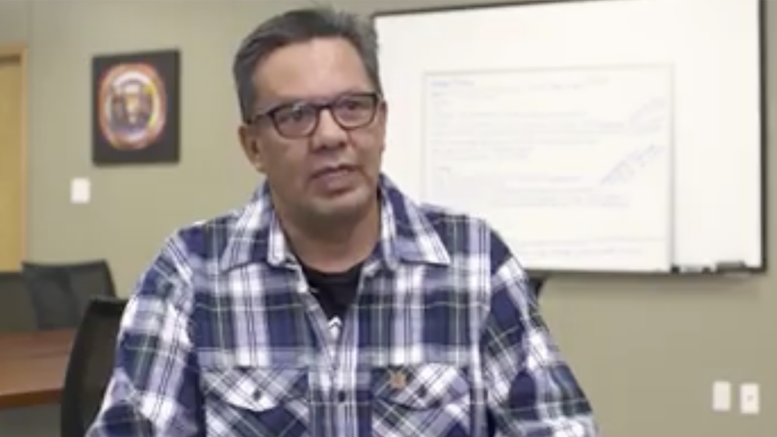By Jeremy Appel, Local Journalism Initiative Reporter
(ANNews) – While there’s been much attention on disputes between First Nations and Métis communities over federal legislation recognizing certain Métis groups as official orders of government, First Nations and Métis communities are collaborating in Alberta to protect its woodland caribou population.
On Dec. 7, representatives of 17 First Nations and Métis communities in Alberta tabled a report to the province’s Ministry of Environment and Protected Areas with recommendations on how to uphold Treaty rights in the Wandering River Sub-region in northeastern Alberta.
The report, entitled Living with the Land, is intended to assist the province in developing its Wandering River sub-regional land-use plan, which is expected to be released for public input and formal Indigenous consultation in the new year.
Chipewyan Prairie First Nation Chief Vern Janvier said the report “represents a significant change in provincial practice.”
“Alberta has never before engaged this deeply with Indigenous peoples in this region to understand our relationship to the land on which our ancestors have lived for millennia, and on which we have a right to preserve and practice our way of life,” Chief Janvier wrote in a statement.
“I expect the Province will incorporate our recommendations into the Wandering River plan to better manage development and cumulative effects, and to protect woodland caribou and its habitat, not just for us, but for all people.”
Living with the Land includes recommendations on establishing disturbance and reclamation targets for protecting the woodland caribou habitat, eliminating barriers towards Indigenous Peoples’ using the land, resolving competition and conflict for Indigenous land use, and preserving or restoring the quantity, quality and diversity of the sub-region’s land and resources.
“First Nations and Métis people are not stakeholders,” Diane Scoville of the Lakeland Métis said in a statement, “we are rights-holders. Development and conservation decisions both must mitigate impacts to our rights, and when they cannot be adequately mitigated an accommodation must be found.”
In August 2019, the Alberta government established six sub-regional task forces to develop local land-use planning, including caribou conservation, for northern Alberta — Wandering River, Berland, Chinchaga, Cold Lake, Bistcho Lake and Smoky River.
The Cold Lake and Bistcho Lake plans were released in April 2022.
The Wandering River task force reached a consensus recommendation that it adopt a zoning approach “where different areas have different management strategies” as they pertain to local Indigenous rights.
In addition to Indigenous communities, the task force has consulted with energy, forestry, and aggregate industries, municipalities, recreationalists, and environmentalists.
Mike Cardinal of Métis Nation of Alberta Region 1 said working on Living with the Land was a “very rewarding” experience.
“We’ve had the opportunity to share Indigenous Knowledge with other communities and to discover we have shared priorities that are important if Alberta is to meet its land use planning aspirations,” he added.
Woodland caribou are designated as a threatened species under Alberta’s Wildlife Act. Its ranges’ restoration are a key goal of the sub-regional plans.
The Wandering River plan will be a statutory component of the broader pre-existing Lower Athabasca Regional Plan (LARP).
Five of the communities who worked on Living with the Land were part of a group who demanded a review of LARP in 2015, resulting in a review panel the following year accepting that the existing plan took insufficient account of the “balance between industrial activity and the ‘constitutionally protected rights’ of First Nations.”
“Our ancestors did not surrender our territory,” said Gilmen Cardinal of the Bigstone Cree Nation. “They agreed to share the land and its bounty with the newcomers. That reciprocal relationship has been lost. Incorporating an Indigenous worldview into the Wandering River plan will help to restore that balance and advance reconciliation.”



Be the first to comment on "Northern Alberta Indigenous communities submit land-use report for woodland caribou conservation"